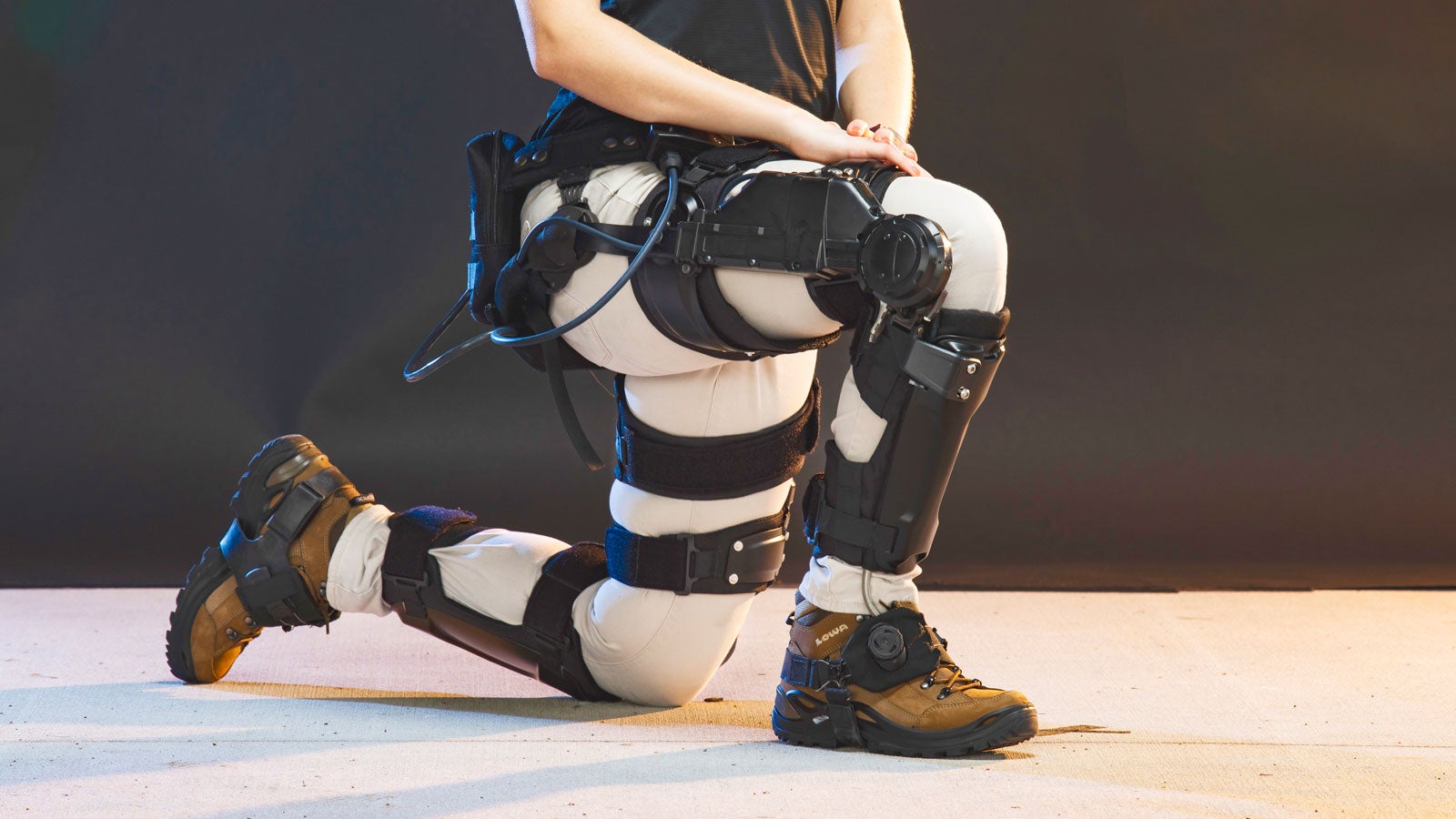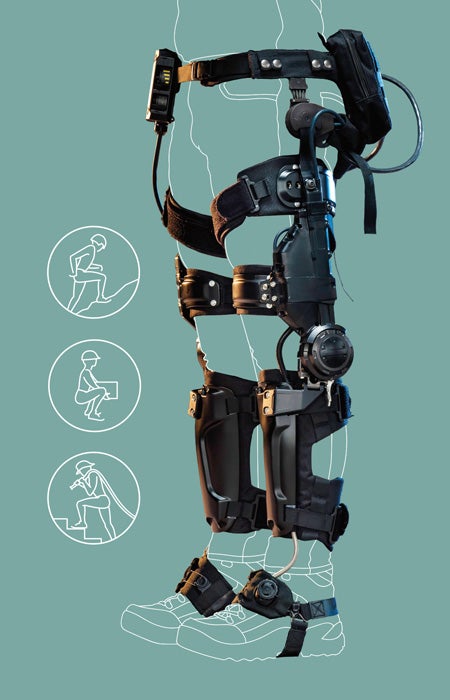
Power Move
Fall 2019 | By Bree Watson ’04
Countless examples of exoskeletons exist in the world. Scorpions, snails and lobsters have shells instead of bones. Iron Man films and Halo video games shine a spotlight on superhuman suits. And then there’s that scene in Aliens when Ripley dons a yellow power loader and dukes it out with the xenomorph queen. For Gavin Barnes ’07 ’09MS ’13MBA, lead engineer for Lockheed Martin’s exoskeleton technologies program, exoskeletons are a way to help people perform jobs with improved strength, endurance and safety.
Barnes’ latest project, Onyx Exoskeleton, is a wearable robot that supports and boosts the energy of its user during physically demanding tasks that require repetitive kneeling, squatting, climbing and carrying heavy loads.
Namesake
The name Onyx was chosen by the team that works on the project, many of whom are UCF alumni. “It was inspired by an amulet that Roman soldiers wore into battle for courage,” says Anthony Mickle ’98, communications lead at Lockheed Martin. “And this is one you wear for endurance.”
“Think of a firefighter running up the stairs of a burning building. A soldier marching up the side of a mountain. Industrial workers who have to squat down and pick up heavy objects,” says Barnes, who majored in mechanical engineering. “Onyx takes the burden off [the user’s] knees and the associated muscle groups, so they have more energy to do their job and do it safer because they’re not getting tired.”
Here’s how the Onyx Exoskeleton works and what’s in development:

Predictive AI
Sensors at the feet, knees and hips collect data based on the user’s movement and send it to the control module on the waist. Artificial intelligence within the computer enables the device to predict the user’s next movements and react accordingly. “Once [AI] can predict what you’re about to do,” Barnes says, “it knows the right amount of torque and the timing for it to be applied to the motors at your knees to give you that boost of assistance and energy.”
Clear Benefit
In a trial run, a user was asked to exercise with a 185-pound squat bar, and he completed around 25 squats. The next day, the same person was outfitted with an Onyx and asked to perform the same exercise. He reached 72 squats before being stopped by the team. “The user was already physically capable of holding this weight, but the Onyx helped him go that much further,” Barnes says.
Toughen Up
Weighing nearly 20 pounds, including its battery, Onyx is made of carbon fiber, aluminum, plastic, fabric and a bit of titanium. “It’s not ready for water, sand, dust, shock or vibration,” says Barnes. “But our users will ultimately put it through all those paces, so [we’re working on ensuring] it can withstand any environment.”
Looking Ahead
It takes about 150 milliseconds for Onyx to respond to a user’s movement, which is similar to the amount of time it takes muscles to respond to signals from the brain. The team plans to use a technique called electromyography to cut that time in half, enabling the exoskeleton to not just predict what movements will be based on AI, but to implement the next motor command while the user is in motion.